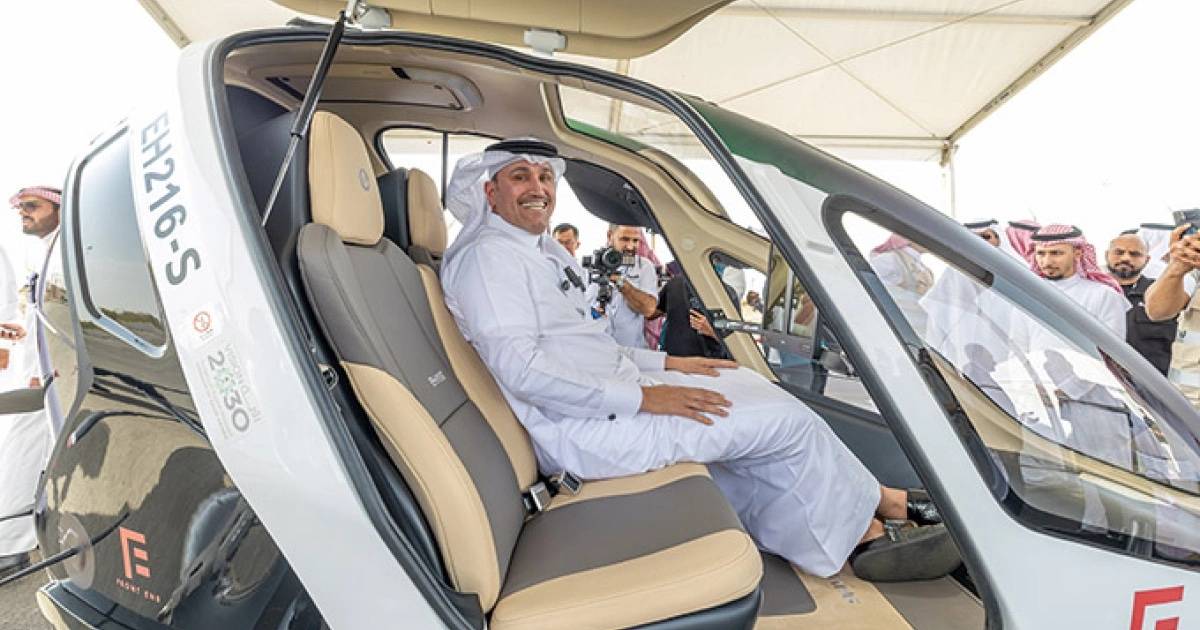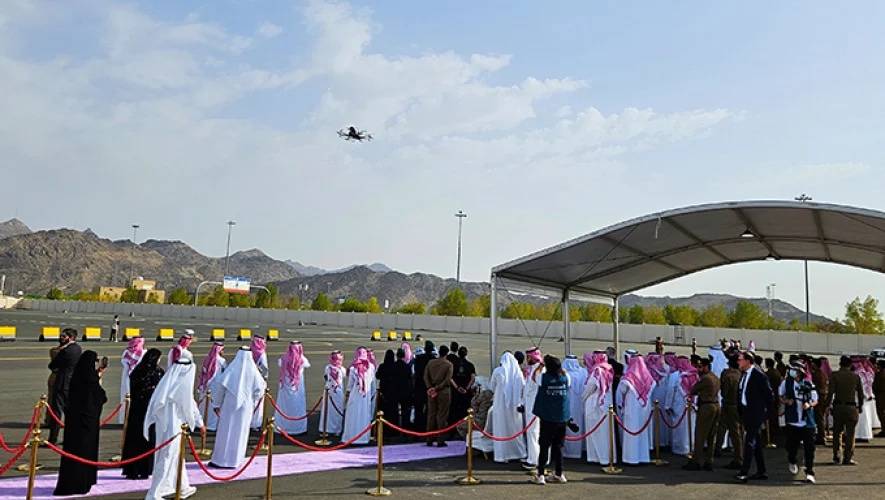Saudi Arabia set to lead charge in flying taxis
Major electric verticle takeoff and landing aircrafts developers are vying for a foothold in the region

Riyadh: Saudi Arabia is planning to integrate electric vertical takeoff and landing (eVTOL) aircraft, also known as flying taxis, into its transportation system.
This week, government officials signaled their intention to expedite the approval process for eVTOL operations, paving the way for commercial air taxi services shortly.
Saleh Al-Jasser, the country's Minister of Transport and Logistics Services and chairman of the General Authority of Civil Aviation (GACA), announced plans to utilize eVTOL aircraft for various purposes, including transporting pilgrims between holy sites, emergency medical support, and medical supply delivery.
EHang takes flight in Mecca
On June 12th, China's EHang received special approval from GACA to demonstrate its two-seat autonomous EH216-S aircraft in Mecca. This public showcase, facilitated by EHang's new local partner Front End, serves as a crucial step towards obtaining official approval for the first eVTOL model in the Saudi market.EHang flew its autonomous, two-seat EH216-S eVTOL aircraft in Mecca, Saudi Arabia.

Image credit: AIN
The race for early adoption
EHang is not alone in its pursuit of the lucrative Saudi Arabian market. Other major eVTOL developers like Joby, Archer, Eve, Volocopter, and Lilium are all vying for a foothold in the region. Their primary objective is to secure GACA validation of their existing type certificates, with EHang holding a potential advantage due to receiving Chinese certification in October 2023 and series production approval in April 2024.
Saudi Arabia: A prime market for AAM
The Saudi aviation industry is embracing the potential of Advanced Air Mobility (AAM). Abdulaziz Al-Duailej, president of GACA, emphasized their commitment to integrating AAM solutions while maintaining the highest safety standards. He views the EHang demonstration as a significant step towards this goal, showcasing the technology's potential for various use cases and contributing to the development of a comprehensive AAM roadmap.
The Middle East: A launchpad for global eVTOL operations
According to Louis Liu, founder and CEO of AAM consultancy DAP Technologies, the Middle East, with its focus on futuristic city development and strong economic base, presents an ideal entry point for eVTOL manufacturers from all over the world.
He cites Saudi Arabia's ambitious Neom project, a futuristic city planned near the Red Sea, as an example of how the region is embracing new transportation solutions.
Experts like Robin Riedel, who co-leads McKinsey's Center for Future Mobility, believe the Middle East has the potential to be the launching pad for the world's first commercial eVTOL operations. He envisions a scenario where companies like Joby and Archer could start passenger services in the region before the US market is ready.
A Call for action for western manufacturers
Riedel also cautions Western eVTOL developers not to underestimate the rapid progress China is making in this field. With two certified aircraft models (EHang's EH216-S and AutoFlight's CarryAll freighter), Chinese manufacturers are setting a fast pace.
EHang: Awaiting the Next Step
While EHang has garnered significant attention through partnerships and demonstrations, questions remain regarding its production capacity and timeline for transitioning from showcase flights to fare-paying commercial operations.
Industry expert Louis Liu clarifies that obtaining operational certification is a crucial hurdle for EHang's EH216.
While approvals similar to the US Part 91 rules might suffice for sightseeing tours in China, commercial air taxi services require the equivalent of Part 135 certification, which is already secured by Joby and Archer in the US.
Liu suggests that EHang's focus on regulatory compliance may explain the delay in mass delivery and operations. Following a step-by-step approach that adheres to Chinese aviation regulations appears to be their current strategy.